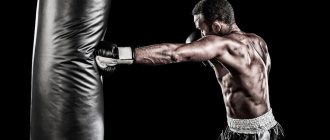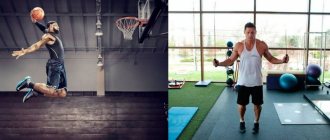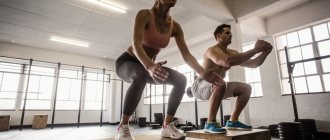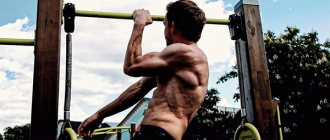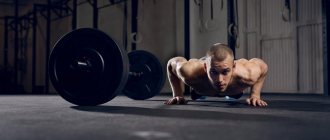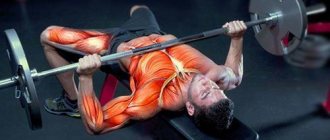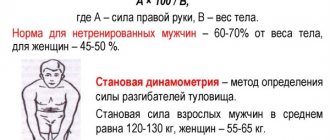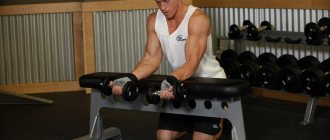Technical points to remember
A strong blow is formed not only due to high speed, but also due to its own weight. If you invest your full body weight, the result will be as powerful as possible. Avoiding dislocations is possible by following the correct execution technique, which involves never straightening the arm completely, and striking at different angles. They bring truly serious damage to the opponent.
Feet
They play no less a role in the impact force. Their position and movement must obey the following nuances:
- The feet must be placed wider than the shoulder girdle.
- The foot is turned in the direction of the movement made by the hand, while the heel is always raised first.
- When a blow is made with the right hand, the left foot does not move, the heel of the right one rises and vice versa.
Proper foot placement allows for much stronger and more powerful strikes, but is not the only thing to consider.
What else do you need to know to give your fist punch power?
- Keep your knees slightly bent, shifting your body weight forward.
- During the strike, the hips should turn in the direction in which the opponent is located.
- In close contact, full movement of the entire body allows you to increase the force of the blow.
- You can't reach forward. The body should turn sharply.
- Pulling the arm back during the swing allows the opponent to predict and prevent the strike.
- When striking, the fist must be clenched as tightly as possible.
- Each new blow is performed with an exhalation of air.
These requirements must be met not separately, but simultaneously.
The meaning of dynamics
Due to his speed, the boxer is ready for attacks. He reacts promptly to the upcoming threat. He can mentally prepare for it and find solutions to effectively deal with it.
It is optimal to perfect strikes in tandems. The coach or partner attacks the head with light blows. They need to be reflected and responded with your own attack.
It is necessary to develop quick reaction and execution of a strike from the initial lessons. The fighter must teach himself, when parrying a blow, not to rush back and keep his eyes open. You need to competently and quickly handle your opponent’s attack and respond to it with maximum benefit for yourself.
It is useful to use a special ball - “fight ball”
Exercises to develop a strong strike
To punch powerfully and strongly, you also need to train. This is facilitated by a set of exercises.
Kicking the ball
To perform the exercise, you must have enough free space. The ball should be taken heavy. The one that boxers train with is best. An alternative would be a basketball.
The execution technique is as follows:
- legs are spaced shoulder-width apart;
- the body is kept straight;
- the ball is raised high above the head;
- the ball is hit with force on the floor and caught after the rebound.
Stuffing is done at least 15 times.
How to increase the power and speed of your strike! Pro Tips
Squat with jump up
Performed according to the following scheme:
- stand straight, legs at shoulder level, and arms at your sides;
- squat until the knees form one line with the hips;
- jump up, raising their arms at the same time.
You need to jump as high as possible. Do so many repetitions that there is no strength left. You can enhance the effect by using dumbbells held in your hands.
Work on apparatus (bag) with dumbbells
For one of the exercises you need to pick up dumbbells. You can start with a projectile weighing 200 grams. We set the stopwatch to a certain period of time. For example, for 30 seconds we work like this: two + three strikes or a certain series of strikes. At the end of the time, remove the dumbbells and work for 30 seconds - the same blows without them. Continue these approaches for 180 seconds. They rest for a minute and start again, changing the series of blows. This approach is used to solve the problem; you can increase the speed of a punch in boxing, karate and other sports.
If there are bags of different compositions in the gym, it would be correct to practice punches on projectiles of different weights and hardness each round. Then the speed of the hand strike will change noticeably. When working on a heavy bag, you need to hit through it, trying to push it out with blows. Such training helps you understand how to increase the speed of your punch.
Training for triceps, shoulder girdle and back muscles
These muscle groups play an important role in increasing the force of a punch and are trained through the following exercises.
Pull-ups
When pulling up, keep your arms slightly wider than your shoulders. To increase efficiency, weights are hung on the belt. They try to do as many repetitions as their own physical fitness allows.
Push ups
Hands are placed as close to each other as possible. You can't arch your back. It should remain straight. The exercise trains the triceps, pectoral and back muscles. The bench press has a similar effect. To strengthen your hands, you need to do push-ups on your fists.
Reverse push-ups
Performed with a bench. They stand with their backs to her, lean on their palms, and squat slightly. They lower and rise by bending and straightening their arms. Do at least 3 sets of 20 repetitions.
Kettlebell Raises
Strengthens the hands and develops the deltoid muscles. The latter have a significant impact on the impact. In addition, the kettlebell is a piece of equipment that promotes muscle growth.
Kettlebell Front Raise
Legs are placed on the sides. A weight is held in a straightened arm between the legs, and the legs are slightly bent at the knee joint. The weight is lifted forward with a sharp movement so that a right angle is formed between the projectile and the body. You need to ensure that your back remains straight at the top extreme point. Do up to 8 repetitions on each hand. Tension should be felt in the muscles.
Lifting with a kettlebell
It is performed similarly to forward lifts, but only the projectile is lifted above the head. The recommended number of repetitions on each side is from 8 to 12 times.
Clean kettlebell lift
The projectile is placed between the spread legs. Place your hand on it so that your hips remain behind. They make a sharp jerk upward, throwing the weight directly onto their shoulders, and then push the projectile above their head. Return to the starting position. You need to do 10 lifts for each hand.
Kettlebell raises from a seated position
They throw the weight over their shoulder and squat down. To maintain balance, put your left hand forward. They lift the kettlebell up, wait a second, do another lift, and then change hands. The buttocks and calves should be constantly tense.
Lifting with a kettlebell from a lying position
They lie with their backs down on the floor, take a weight in their hand and lift it. The hand is held in a vertical position and then begins to rise. Bend first one and then the other leg. If lifting is difficult, help yourself with your free hand. Do about 10 repetitions.
Lifting two weights up
Two shells are thrown onto the shoulders. Having taken air into the lungs, the weights are jerked above the head and then slowly lowered. During the exercise, the abdominal muscles should be tense.
Question about reaction
Rapid reaction in defense and attack are key moments in the fight. A fighter's reaction to a blow is divided into several stages:
- Waiting. The enemy's actions, his techniques, and tension are carefully monitored.
- Preparatory. The emphasis is on the upcoming offensive. The boxer mentally prepares for its implementation. A signal of irritation is sent to the brain.
- Implementation of the strike. The impulse ends up in the muscular system. The shot is converted.
In boxing, to minimize the duration of these stages, it is necessary: 1. Exercises in sparring or on the pads.
- Practicing light and swift air strikes.
- Practicing the skill of constantly controlling an opponent, keeping him in your field of vision.
Another important point is that you need to predict your opponent’s movements. By improving these techniques and fighting techniques, the boxer automates his actions. This makes it easier for him to adapt to the stress of combat and produces the fastest response to enemy attacks.
For a successful reaction, two serious criteria are important:
- Rapid muscle contractions.
- The fighter's technical potential.
General recommendations
To make a punch stronger, you can use the following techniques and methods:
- Exercise with a wrist expander. You need to take the toughest one. The projectile must be compressed sharply and with maximum force. Working with an expander helps develop the interdigital muscles and forearms, which makes the fists more powerful and stronger.
- Jump rope every day. You should try to raise your hips as high as possible and reach your chest with your knees.
- Training with a sledgehammer also has quite the effects. It is taken in the hand and hit on old tires, which activates the muscles that also work during impact. This should be done outside, for example, next to the garage.
- Working in pairs, you need to try to hit the “paws”, imagining that the target is a few centimeters further away, trying to pierce through it. This makes it possible not only to hit harder, but also not to lose speed.
- Shadow boxing should not be neglected. This exercise allows you to learn how to deliver unexpected blows, which are the most effective, since the opponent does not have time to react. You need to exercise every day for at least 10 minutes.
- Explosive blows help develop push-ups both on the palms off the floor and on the fists. The number of approaches should be at least three with ten repetitions each.
Introduction
In the modern world, young people are increasingly striving to find themselves in some kind of sport, and the choice of many falls on boxing. This is explained by the fact that boxing involves not only performing strength exercises, but also primarily developing the athlete’s speed, endurance, strength, the ability to quickly make decisions, react to the slightest changes in the opponent’s strategy, and, of course, the ability to calculate his actions several moves ahead . Along with developing strength and endurance, increasing a boxer's speed is one of the most important stages in improving his skills. Speed training includes exercises to develop punching speed, boxer reactions, developing running speed, etc.
